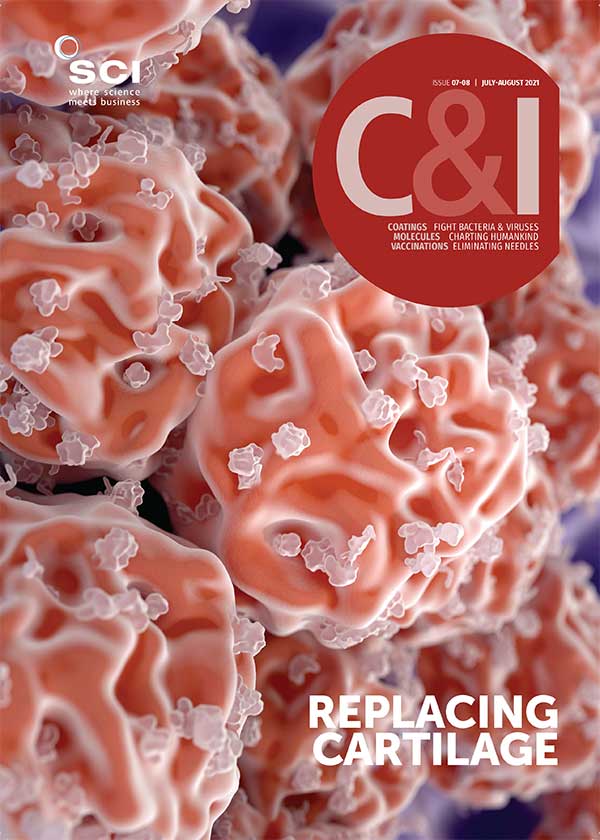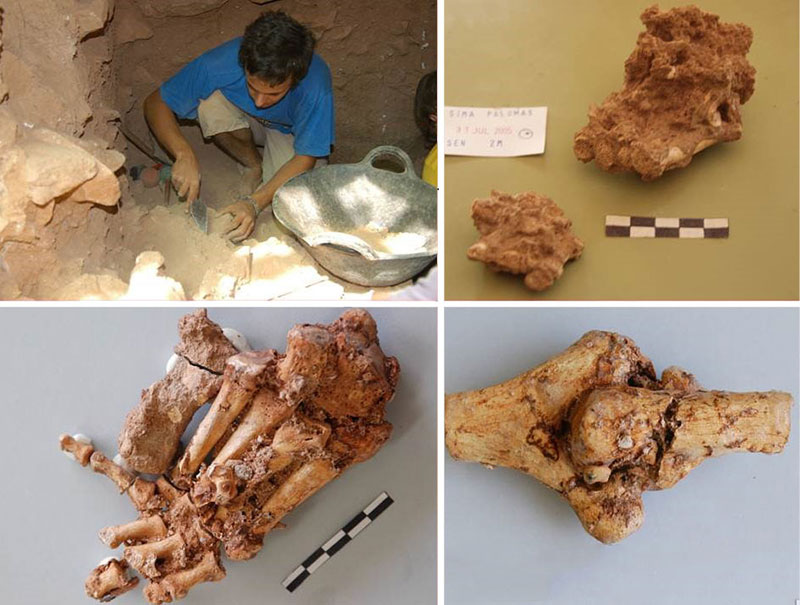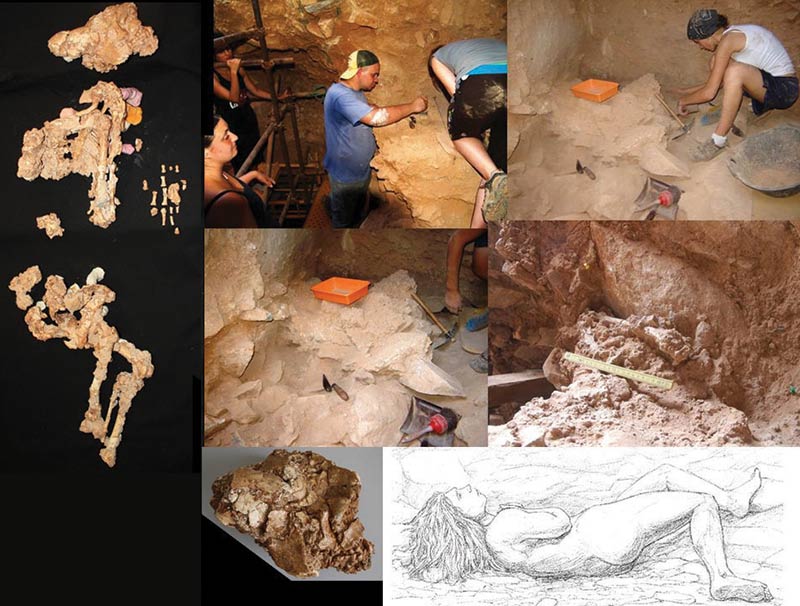Fossils of ancient humans are in limited supply, but molecular analysis plays a major role in revealing more about the lives of Stone Age hunters, including their diets and family trees, Michael Gross reports
Only a decade after the draft version of the human genome, the group of Svante Pääbo at the Max Planck Institute for Evolutionary Anthropology (EVA) at Leipzig, Germany, surprised the world with the publication of a similarly detailed genome of the Neanderthal. The analysis relied on microgram amounts of DNA retrieved from a tooth with a dentist’s drill.1
Since then, many more modern humans have been sequenced, but also an astonishing number of ancient individuals, including more than a dozen Neanderthals, a population that disappeared at least 40,000 years ago. The research also revealed a new hominin group, the Denisovans, only discovered thanks to DNA retrieved from a finger bone fragment. The common ancestors of Neanderthals and Denisovans are believed to have separated from our ancestors around 600,000 years ago. Most fossils in the age range relevant for Neanderthals and Denisovans, however, do not yield any DNA suitable for sequencing. To link the genes to more meaningful fossils, additional methods were needed focusing on proteins, which are more stable than DNA.
Pushing the limits
The first larger fossil connected to Denisovans turned up in Tibet. The mandible with two teeth had been found in 1980 and dated to at least 160,000 years old – far beyond the survival time of usable DNA traces. Instead, Fahu Chen at the Chinese Academy of Sciences and colleagues used mass spectrometry to analyse the proteins of the dentine in the teeth.2 Comparing the protein sequences obtained to those derived from the ancient genomes sequenced in the last ten years, the closest match was with the original Denisovan sequence. This came as a surprise, as the Denisova cave, in the Altai mountains of Siberia, was several thousand km away from where the mandible had been found.
On the other hand, the attribution made sense because the Denisovan genome contains a gene variant known to improve survival in high altitude environments such as Tibet. Thus, it is a reasonable hypothesis that Denisovans including the ancestors of the Altai individual, have spent enough time in Tibet to adapt to high altitude life, and then spread out from there, reaching the cave in Siberia. Today, genetic traces of Denisovans are still found in populations in South Asia.
Travelling even further back in time, Frido Welker and colleagues from the University of Copenhagen, Denmark, analysed a fossil of Homo antecessor found in Spain in 1994 and dated to around 800,000 years.3 Based on anatomical evidence, H. antecessor had been discussed as a possible direct ancestor to our lineage.
Studying the tooth proteome of this putative ancestor, Welker and colleagues established that he was male. Intriguingly, there is a tooth protein named amelogenin, whose genes are located on the sex chromosomes and carry subtle differences between the X and the Y version. This ancient man turns out to be more of a great uncle than an ancestor. As far as the limited genetic information available from the tooth proteome can tell us, he was part of a lineage parallel to the one that later split into Neanderthals, Denisovans, and modern humans.
Microbiome menu
Beyond the protein in the teeth, the calcified layers (dental calculus, plaque or tartar) on the teeth also have stories to tell, as they may preserve the microbes naturally present in the mouth, collectively known as the oral microbiome. To demonstrate the usefulness of bacterial metagenomes conserved in dental plaque, James Fellows Yates and Christina Warriner from the Max Planck Institute for the Science of Human History (SHH) at Jena, Germany, with colleagues around the world, have analysed the oral microbiomes of humans, Neanderthals and other primates covering a time range of around 100,000 years.4
Studying more than 100 specimens of oral metagenomes – the combined genetic data of microbes present in the plaque – the researchers found a core set of types of bacteria shared between all species studied, including the howler monkey from Central and South America. The bacteria are therefore likely to have been present since the split between New World and Old World monkeys some 40m years ago.
Other sets of microbes were different between humans and apes such as chimpanzees, but virtually indistinguishable between ancient (pre-agriculture) humans and Neanderthals. The helpful bacteria that set the Stone Age humans apart from apes and monkeys includes, most notably, a variant of oral Streptococci adapted to digest starch.
From this, the authors conclude that Stone Age hunter gatherers had added starch-rich roots and tubers to their diet long before the beginnings of agriculture, possibly even before the split between Neanderthals and our ancestors. Even without growing them, they seem to have discovered that starch rich foods were offering a reliable source of calories throughout the year. ‘These new data make every sense to me, reinforcing the newer view about Neanderthals that their diets were more sapiens-like than once thought, [meaning] starch-rich and cooked,’ said co-author Richard Wrangham, from Harvard University, US. The authors speculate the ability to use and cook starch may have provided the ancestors we share with Neanderthals the energy required for the evolutionary step of ‘encephalisation’ or growing a bigger brain in relation to body size, which distinguishes us from most of our mammalian relatives.
These [oral metagenome] data make every sense to me, reinforcing the newer view about Neanderthals that their diets were more sapiens-like than once thought, [meaning] starch-rich and cooked.
Richard Wrangham Harvard University
Although these microbial species in our mouths are part of what makes us human, the authors point out, we still know far too little about them. Some of the genera the study identified as shared Homo heritage do not even have a formal scientific name yet.
In addition, the researchers detected shared microbial traits in the microbiomes of Neanderthals and our Stone Age ancestors that went missing in more recent humans, possibly after the rise of agriculture. The general lesson is that our ancestors may have been more similar to their Neanderthal contemporaries than to us, which also chimes with the increasing evidence of frequent admixture between the two populations that are no longer regarded as separate species.
In a separate project analysing dental plaque from Bronze Age residents of the Southern Levant for plant-derived proteins, Warriner’s group found the earliest evidence of the arrival of Asian food in the area, including sesame, soya bean and turmeric, and possibly also banana.5 Although these findings do not bear on human evolution, they do shed new light on the cultural history of the ancient civilisations of the Mediterranean, and on early precedents of long-distance trading networks.
More recent changes in human nutrition can also be read from ancient faeces. The importance of the gut microbiota for health and disease and the damaging influence of modern developments, such as food poor in fibre and widespread use of antibiotics, have been recognised. However, it has not been clear whether any of the indigenous populations still maintaining a pre-industrial lifestyle yield an accurate representation of the human gut microbiome as it was before the advent of industrial food production and antibiotics.
The team of Aleksandar Kostic at Harvard Medical School, US, and colleagues have now been able to establish a reference point for the natural state of the human gut microbiome by studying well-preserved faeces found in arid caves in the southern US and in Mexico and dated to more than 1000 years old.6 Reconstructing microbial genomes from these so-called palaeofaeces, the researchers were able to show that the pre-industrial gut microbiomes were more diverse. While the samples from a few caves in North America may not be representative of our entire species in ancient times, the results broadly agree with findings from modern day hunter gatherer societies.
Excremental evidence was also found in a Spanish cave where Neanderthals are known to have lived for many millennia. Benjamin Vernot and colleagues at EVA, Leipzig, Germany, developed a methodology to authenticate and sequence DNA found in the sediment layers of the cave, believed to have come from accidental spilling of human cells such as a bleeding injury or an infant not being sufficiently ‘potty-trained’. The researchers could detect mitochondrial DNA when they introduced this new method four years ago, and now they also detect the main (nuclear) genome and show that different, unrelated groups of Neanderthals lived in the cave at different times in its habitation history.7
The oldest genomic DNA from the cave sediments was dated to around 113,000 years and identifies a Neanderthal male from a genetic background similar to the early Neanderthals of other locations in Eurasia, including the Denisova cave. DNA found in more recent sediment layers, however, comes from two female Neanderthals more similar genetically to more recent European Neanderthals such as those of in Vindija cave in Croatia.
Although only an initial demonstration of the power of a revolutionary technical advance, the results already reveal significant development in Neanderthal history. According to the results, including the diversity of mitochondrial DNA, an early, diverse population of Neanderthals declined, possibly at the end of the last interglacial period some 110,000 years ago. A small group of survivors later spread again, producing the genetic evidence now familiar from the 18 Neanderthal genomes sequenced across Eurasia.
600,000
The common ancestors of Neanderthals and Denisovans are believed to have separated from our ancestors around 600,000 years ago.
The helpful bacteria that set the Stone Age humans apart from apes and monkeys include a variant of oral Streptococci adapted to digest starch.
160,000
The first larger fossil connected to Denisovans is a mandible with two teeth, dated to at least 160,000 years old – far beyond the survival time of usable DNA traces.
Six
Researchers can use the length of uninterrupted Neanderthal DNA to estimate how far back in the family history it was acquired. In some cases, the answer is fewer than six generations.
Neanderthal links
Much of the research into the ancient residents of Eurasia is motivated by the desire to understand the relation between archaic humans such as Neanderthals and Denisovans and ourselves. The genomes of Neanderthals have taught us that all modern humans except for those of purely sub-Saharan African descent have a small but noticeable genetic heritage of Neanderthal origin, indicating that our ancestors, when they started spreading out of Africa some 65,000 years ago, mixed with Neanderthals. As they clearly had viable offspring, this rules out the earlier assumption of Neanderthals being a separate species.
While this influx of Neanderthal genes is well documented, there are only very few ancient genomes of modern humans from the time when the mixing happened. Until recently, there were only two sites dated from the time when modern humans and Neanderthals were both present in Europe – around 50,000 to 40,000 years ago – that had yielded usable DNA. The latest publications from the Max Planck researchers at EVA in Leipzig and SHH in Jena have now doubled that number.
Svante Pääbo’s group at EVA released genomes of five individuals found in the Bacho Kiro cave in Bulgaria, including four dated to 43,000-46,000 years and thus the earliest modern humans known in Europe, as well as a more recent individual, only 35,000 years old.8 The group of Johannes Krause at SHH analysed DNA from a female from the Zlatý kůň cave in the Czech Republic, which cannot be carbon dated due to materials used to preserve the bone, but which according to molecular results is also around 45,000 years old.9
The results showed that all the modern humans older than 40,000 years had recent Neanderthal heritage evident in their genes. Researchers can use the length of uninterrupted Neanderthal DNA to estimate how far back in the family history it was acquired. In some cases, the answer is fewer than six generations. Remarkably, as Carles Lalueza-Fox from the Institute of Evolutionary Biology at Barcelona, Spain, points out in a comment on both papers10, there is no evidence of gene flow in the opposite direction, even though more Neanderthal genomes are known than modern human ones from the overlap timeframe.
‘Overall, the new genomic evidence suggests that the later Neanderthals were perhaps not replaced by incoming modern humans, but absorbed by them,’ Lalueza-Fox suggests, ‘and their Neanderthal genomic signal was diluted from the Upper Palaeolithic gene pool by differential demography and later by successive population replacements with lower Neanderthal ancestry.’
References
1 S. Pääbo, Neanderthal man: In search of lost genomes. Basic Books 2015.
2 F. Chen et al., Nature 2019, 569, 409.
3 F. Welker et al., Nature 2020, 580, 235.
4 J. A. Fellows Yates et al., PNAS 2021, 118, e2021655118
5 A. Scott et al., PNAS 2021, 118, e2014956117
6 M. C. Wibowo et al., Nature 2021, https://doi.org/10.1038/s41586-021-03532-0
7 B. Vernot et al., Science 2021, 372, eabf1667
8 M. Hajdinjak et al., Nature 2021, 592, 253.
9 K. Prüfer et al., Nat. Ecol. Evol. 2021, 5, 820.
10 C. Lalueza-Fox, Nat. Ecol. Evol. 2021, 5, 711.
Image: MUPANTQUAT







